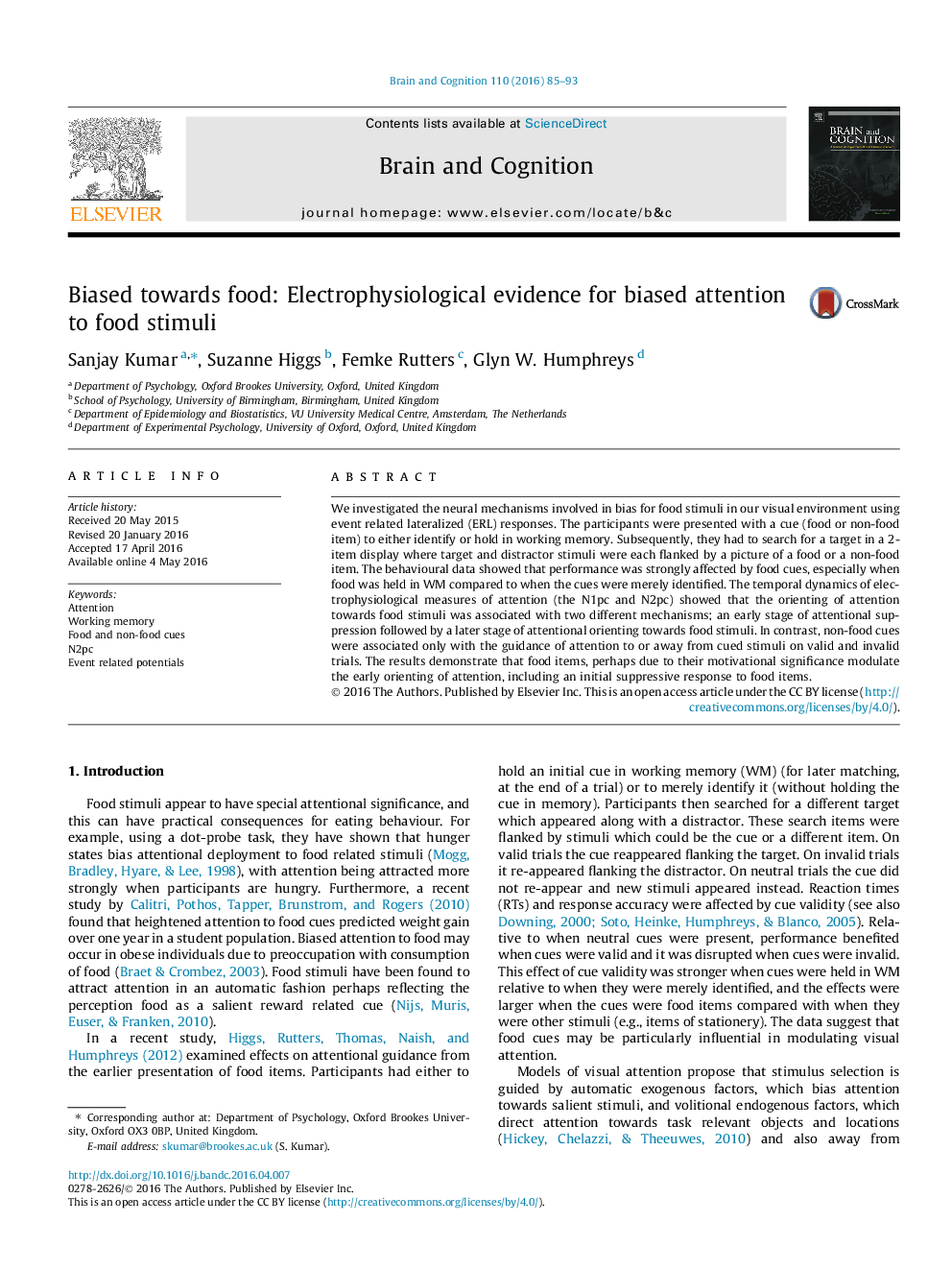| کد مقاله | کد نشریه | سال انتشار | مقاله انگلیسی | نسخه تمام متن |
|---|---|---|---|---|
| 5041209 | 1473961 | 2016 | 9 صفحه PDF | دانلود رایگان |
- Food-related objects kept in working memory are effective in guiding attention.
- Food related attention involves early stage suppression and late stage orientation.
- Body mass index is associated with food related attentional orientation.
We investigated the neural mechanisms involved in bias for food stimuli in our visual environment using event related lateralized (ERL) responses. The participants were presented with a cue (food or non-food item) to either identify or hold in working memory. Subsequently, they had to search for a target in a 2-item display where target and distractor stimuli were each flanked by a picture of a food or a non-food item. The behavioural data showed that performance was strongly affected by food cues, especially when food was held in WM compared to when the cues were merely identified. The temporal dynamics of electrophysiological measures of attention (the N1pc and N2pc) showed that the orienting of attention towards food stimuli was associated with two different mechanisms; an early stage of attentional suppression followed by a later stage of attentional orienting towards food stimuli. In contrast, non-food cues were associated only with the guidance of attention to or away from cued stimuli on valid and invalid trials. The results demonstrate that food items, perhaps due to their motivational significance modulate the early orienting of attention, including an initial suppressive response to food items.
Journal: Brain and Cognition - Volume 110, December 2016, Pages 85-93
